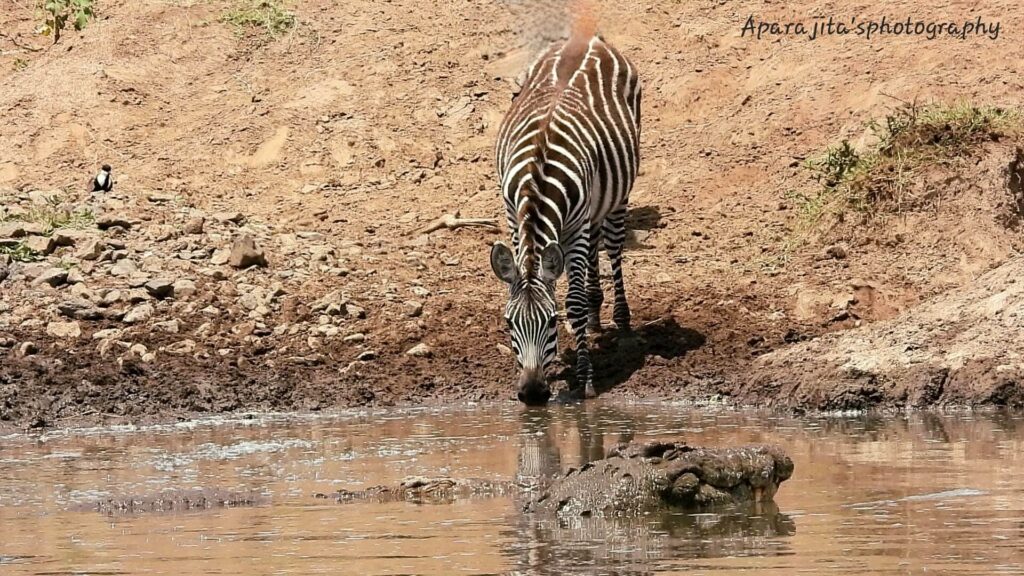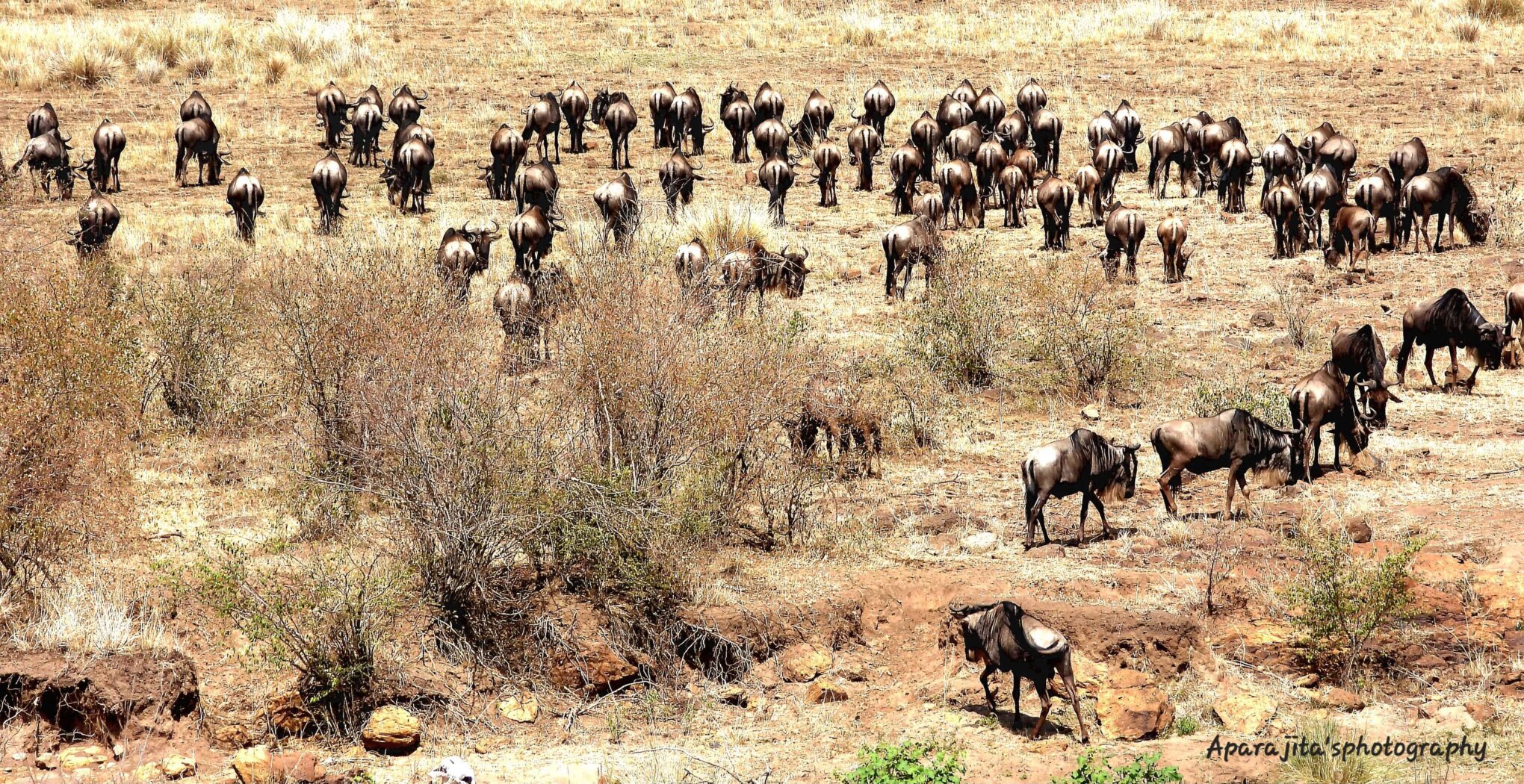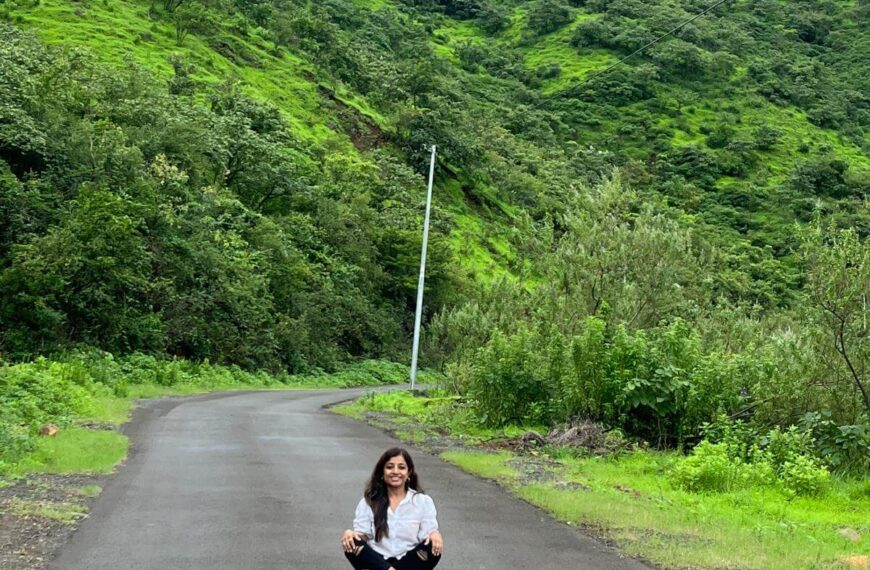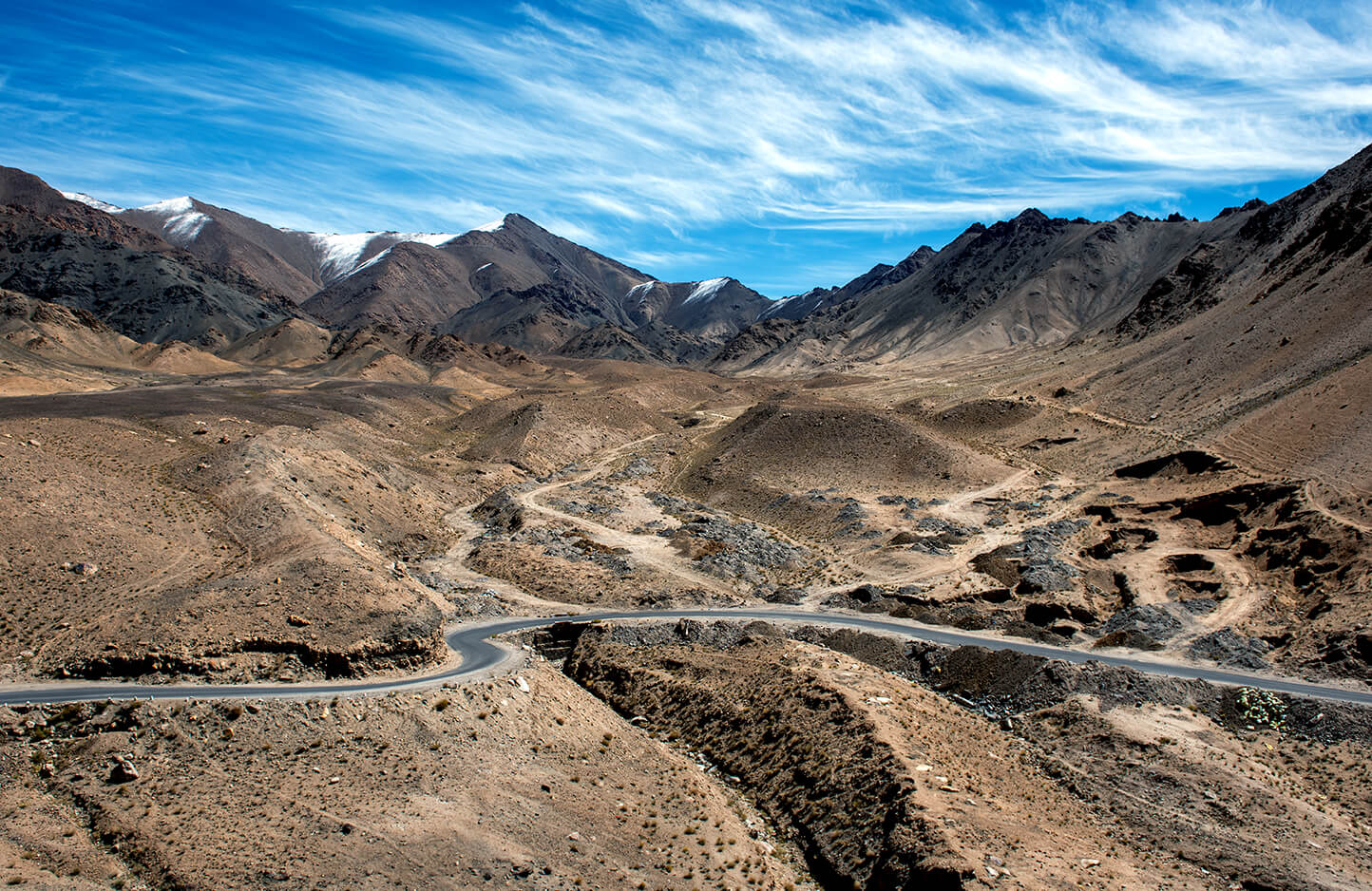On the final day of the Masai Mara safari, Prof Aparajita eagerly anticipated the Great Migration and captured thrilling moments of predator-prey interactions, exclusively for Different Truths.

It was our last day on the Masai Mara trip. Having planned the trip in late August, we had been hoping to see the Great Migration. The day dawned with the news that there was a large group of wildebeest gathered on the bank of the Mara River. Zebras were there too. A crossing looked likely to happen in a short while.
We were already packed in the Safari Land Rover. So, we sped towards the river in the hope of finding a good spot that would allow us a good view of the crossing as well as for photography, and at the same time, not getting in the way of the animals, as they would come up from the river in hordes onto our side of the riverbank.
After a few positions, we finally settled for a spot from where we could see what was happening on the other side of the bank, without obstructing the view of anyone else in the other vehicles. Excited and bristling with anticipation, we got our camera gear out, positioned our tripods and beanbags and waited to go shutter-happy. But the minutes ticked by, and no crossing seemed to be in the offing. There were several wildebeests and many zebras as well. And the numbers kept increasing too, by the minute.
There was an enormous gathering of wildebeest and zebras that looked something like 700 to 800 members strong. The beasts kept grouping and regrouping and making for the river. But just as we thought the first one would leap, making the others follow suit, the herd leader would pull back. And we soon understood why.
… one zebra, with three others straggling uncertainly behind, made its way down the slope to the river…
At one juncture, one zebra, with three others straggling uncertainly behind, made its way down the slope to the river to have a drink of water. It bent its head down to the grey-green water of the Mara River, peacefully having the fill of its coolness, while an enormous crocodile glided in deceptive silence and stealth up to it. We watched in hushed anguish, as the predator reached within a foot of the prey. It was then that we noticed that there were several large crocodiles in the water, cunningly submerged and almost invisible under the glistening surface if you didn’t know where to look.

Turning our excited gaze to the zebra at the edge of the water once again, we saw the crocodile move within inches of the unsuspecting animal. And just when the crocodile opened its great yellow maws in anticipation, the startled zebra caught sight of it at the last moment. Alarmed, the zebra wheeled around in a trice and bounded up the slope in panic, just as the cavernous jaws of the crocodile clamped shut! Talk about a narrow escape!
Most of us being photographers, there was a collective moan of disappointment at what could have been a stupendous shot of nature, red in tooth and claw, as Tennyson would have described it. One of our co-travellers said she wished the croc had been a little faster in action! As we watched, the drama of grouping, scattering, and regrouping resumed, as the wildebeest and zebras began their coordination all afresh.
… we trundled off in our vehicles in search of more exciting ventures.
Realising that the crossing was not likely to happen in a hurry, we trundled off in our vehicles in search of more exciting ventures. One question just kept lurking uncomfortably in the depths of my safari-intoxicated mind: how much love of excitement does it take to want an unsuspecting animal to be hunted in all gore and violence so that jaw-dropping pictures could busily be clicked to be shown off later to friends and acquaintances on social media?
Photo by the author








 By
By